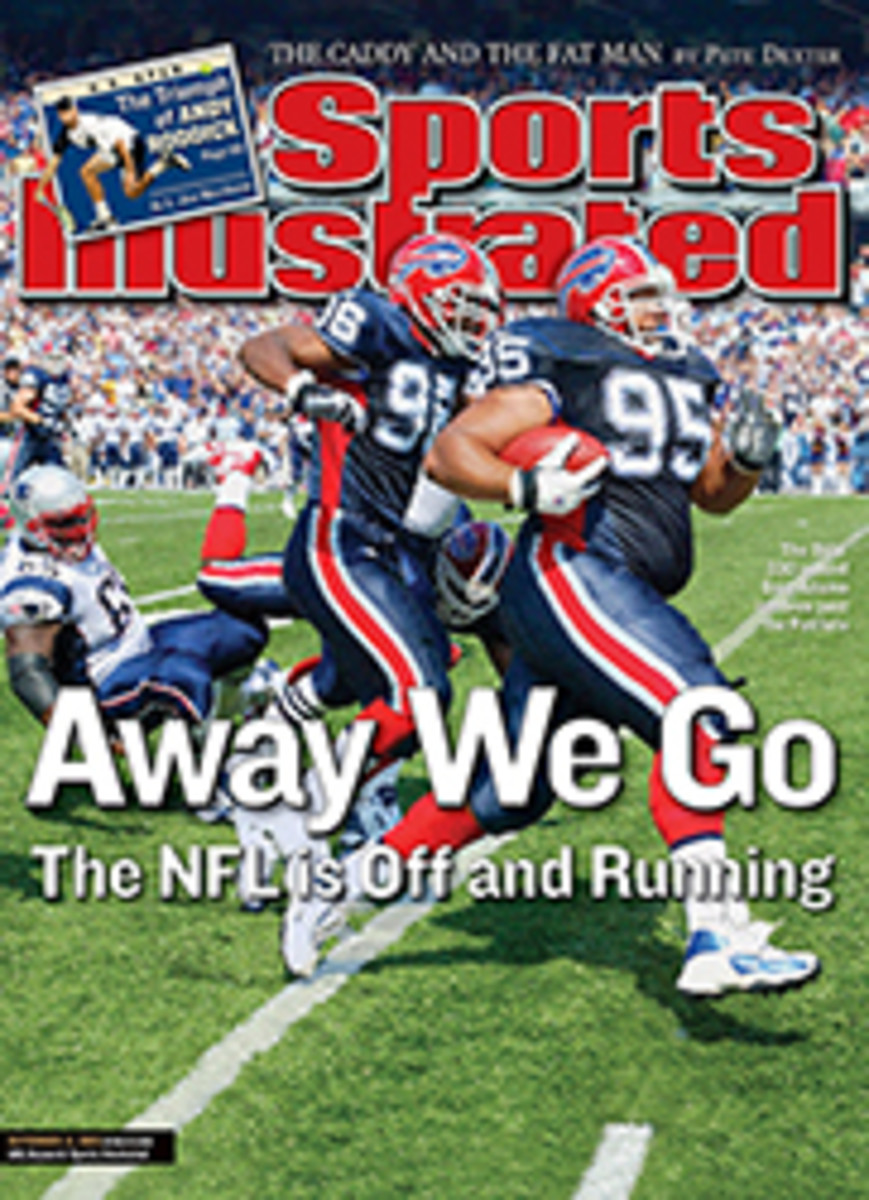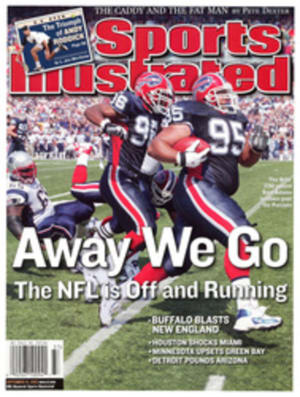
The Blue-Gold Bridge For 47 years a charity football game has brought the state's north and south together
On a June evening in 1955 my dad, Jim, had a conversation with
Philadelphia Phillies owner Bob Carpenter that would change my
life and the state of Delaware forever. It took place behind the
backstop at a baseball diamond in our hometown of Wilmington
during a sandlot game. I was catching, and my best friend, Ruly
Carpenter, was pitching. We were both 15 years old. ¶ In those
days Delaware was divided. In the north lay Wilmington and the
chemical industry, anchored by DuPont. Down south were farms that
produced chickens, soybeans, corn and peaches. The Chesapeake and
Delaware Canal separated north from south, and we never ventured
B.C.--Below the Canal--except to go to Rehoboth Beach, which had
a great boardwalk.
As tiny as Delaware is, it had no unifying sports event. My dad
and Ruly's were about to change that. At the backstop they were
discussing their kids--not Ruly and me, but two of our siblings.
Both my younger sister Mary Ellen and Ruly's older brother,
Kemble, were classified as mentally retarded. (Mary Ellen has
what is now known as Down syndrome.) In those years there was
little understanding of such children, who were often
institutionalized for life. Nor was there any support system for
their parents, who sometimes struggled with feelings of failure
and even shame.
Our fathers decided to create an event to raise awareness--and
money--to help mentally handicapped kids. Thus was born the
Delaware Blue-Gold All-Star Football Game, an annual matchup
pitting high school players from the state's north against those
from the south.
The first Blue-Gold game was set for the following summer. The
teams had two weeks to train for it, with the North squad
encamped at Sanford Prep, a boarding school near Wilmington. But
a problem arose. Two players for the North, Joe Peters and Alvin
Hall, were black. Sanford administrators worried that having
black players live in the dorms might upset some students,
especially those from Southern states. Joe and Alvin were told
they could practice at Sanford but could not eat dinner or sleep
there.
Immediately my dad, a North Carolinian by birth, said, "They will
stay at our house." For the next two weeks Joe and Alvin lived
with us. Every morning at seven I would make their breakfast and
drive them to practice; I would also pick them up at the end of
the day. I was proud of my dad, a former teacher and baseball
coach who worked in the insurance business, for taking this stand
and impressed by the equanimity and quiet courage Joe and Alvin
demonstrated. The experience ultimately molded my view of race
relations. This was my first contact with black athletes, and
I've now spent most of my adult life working with them.
On a Saturday afternoon in August 1956, some 10,000 fans greeted
56 high school players as they entered the University of
Delaware's stadium. The North won 27-6, and a tradition was
launched. Since then, 3,100 players have taken part in the
Blue-Gold, with more than a dozen going on to the NFL. The event
has raised more than $5 million.
Perhaps just as significant, the game has forged new bonds, not
only between northern and southern Delaware, but also between
game participants and the mentally handicapped. Under a buddy
system set up in 1974, everyone involved in the game is matched
with a child or young adult with a cognitive disability. It's
common for these buddies to keep in touch long after the final
play. Some Blue-Gold alums have even chosen careers working with
the disabled.
After each game a leadership award is presented in Bob
Carpenter's name and a spirit and morale award in my father's.
Those two dads were as proud as I've ever seen them on the day in
1958 when Ruly (who later became Phillies president) and I played
in the Blue-Gold, Ruly at end and I at quarterback. We helped the
North to a 27-0 victory.
At the start of the Blue-Gold training camp that year, SPORTS
ILLUSTRATED ran a photo in a weekly feel-good feature called "Pat
on the Back." There were Ruly and I, resplendent in our All-Star
uniforms, with our dads standing behind us. That picture is still
one of my prized possessions.
Longtime NBA G.M. Pat Williams, now senior vice president of the
Orlando Magic, is in the Delaware Sports Hall of Fame.
COLOR ILLUSTRATION: ILLUSTRATION BY JOE CIARDIELLO

